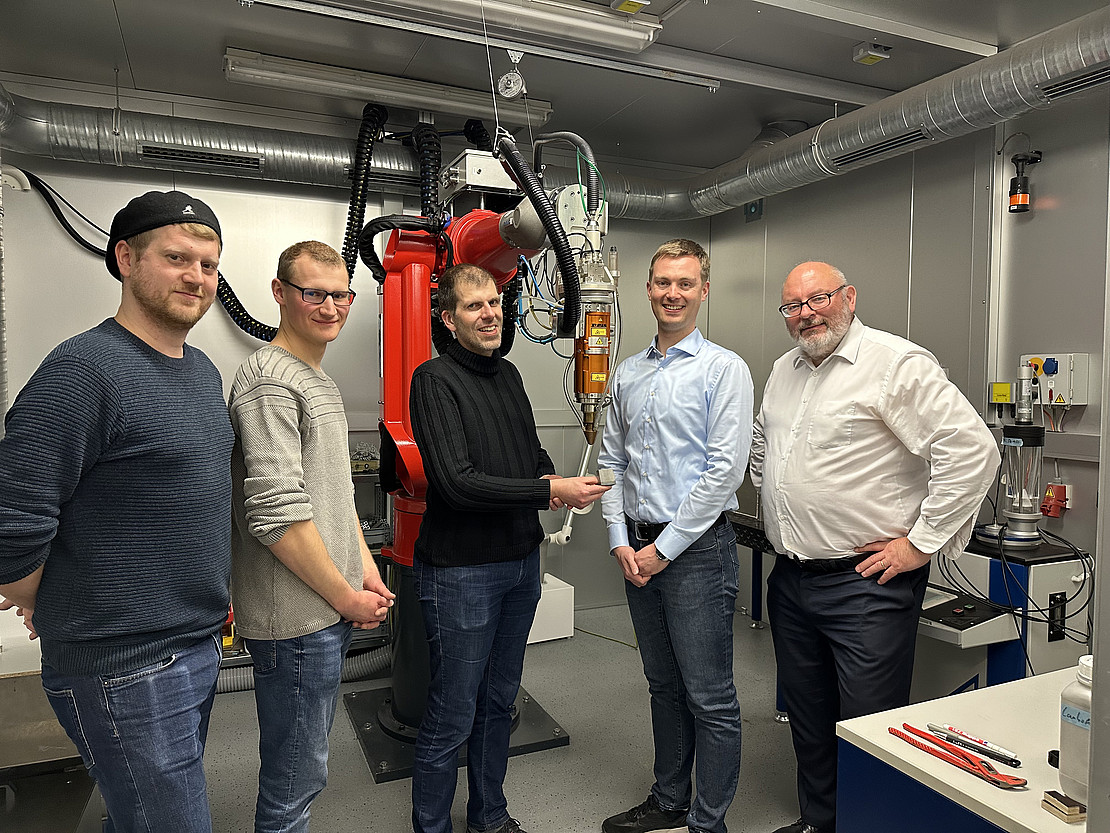This page contains automatically translated content.
Customized shape memory alloys using ultrasound?
 Image: tff.
Image: tff.Scientists from the Institute of Materials Engineering, Department of Metallic Materials, led by Prof. Dr.-Ing. Thomas Niendorf and the Department of Separating and Joining Manufacturing Processes, headed by Prof. Dr.-Ing. Prof. h.c. Stefan Böhm, are investigating the influence of ultrasound on so-called cobalt-nickel-gallium high-temperature shape memory alloys during additive manufacturing (3D printing) in a project funded by the DFG. The aim of the project is to directly tailor the shape memory properties, as it is already known that ultrasound sets the molten material in motion and could enable targeted control of solidification.
High-temperature shape memory alloys are particularly suitable as material- and cost-efficient sensors and actuators in high-temperature applications. One attractive alloy system is the cobalt-nickel-gallium high-temperature shape memory alloy (Co-Ni-Ga-HT-FGL for short), which is characterized by comparatively low alloying costs and very good functional properties up to temperatures of 500°C. Numerous preliminary studies and publications in the fields of metallic materials and cutting and joining manufacturing processes have already shown that this alloy system is easy to process and can produce suitable microstructures. In addition, it is already known from other alloy systems that ultrasonic waves can produce a very different microstructure during additive processing and pave the way for three-dimensionally graded structures.
As part of the project "Functionally graded Co-Ni-Ga high-temperature shape memory alloys produced by ultrasonically excited 3D laser powder cladding", which runs from April 2023 to March 2026 and is funded by the German Research Foundation DFG with around 700,000 euros, laser powder cladding is to be used to overcome previous limitations in the processing of the alloy and to use ultrasound to set targeted microstructures in desired areas so that the existing SMAs can be tailored.
Shape memory alloys are one of the main research areas of Prof. Dr.-Ing. Thomas Niendorf, Head of the Department of Metallic Materials at the Institute of Materials Engineering. SMAs are alloy systems that exhibit a reversible diffusionless phase transformation (martensitic transformation), usually when a stress or temperature change is applied. After deformation, they return to their original shape when heated, which gives them their name. Areas of application include connecting elements for pipes, stents and brace wires in medical technology or actuators in automotive and aerospace technology.
The project is being carried out as part of the "BiTWerk - Biological Transformation of Technical Materials" research cluster.